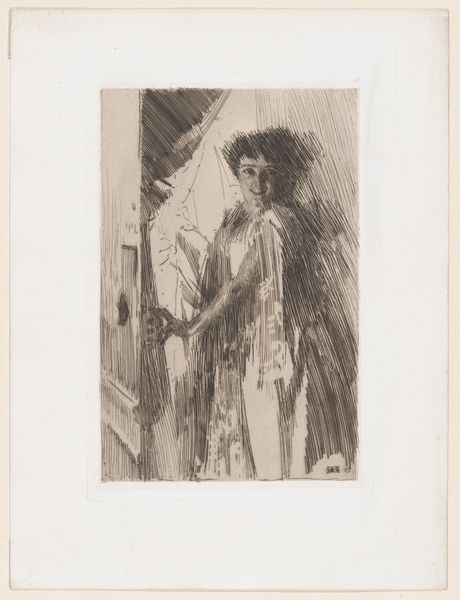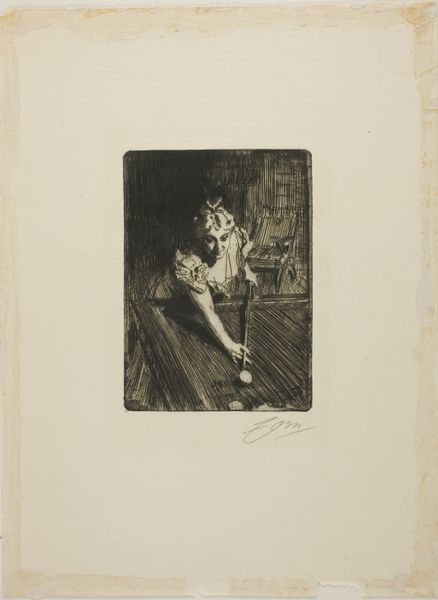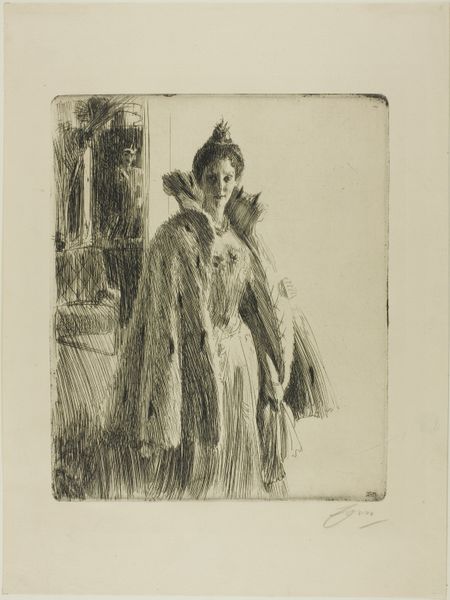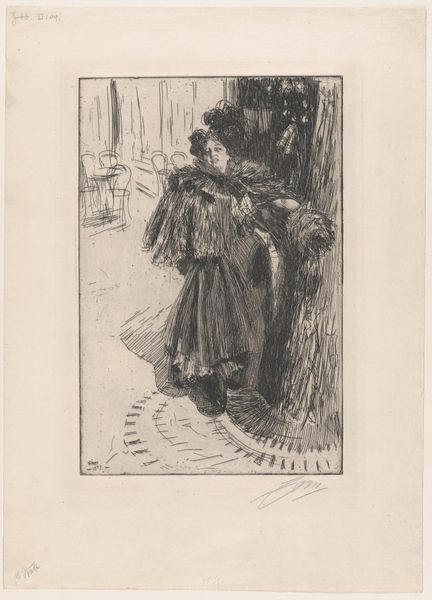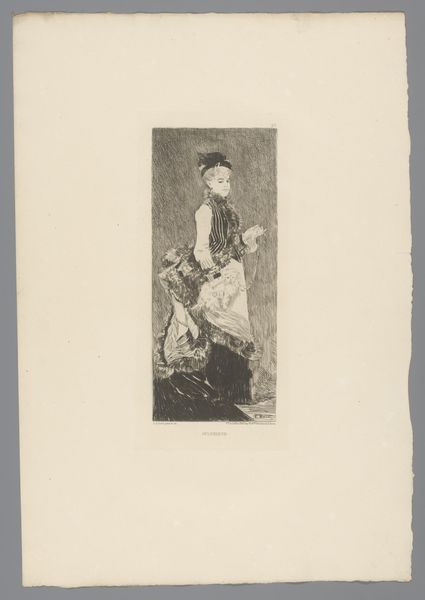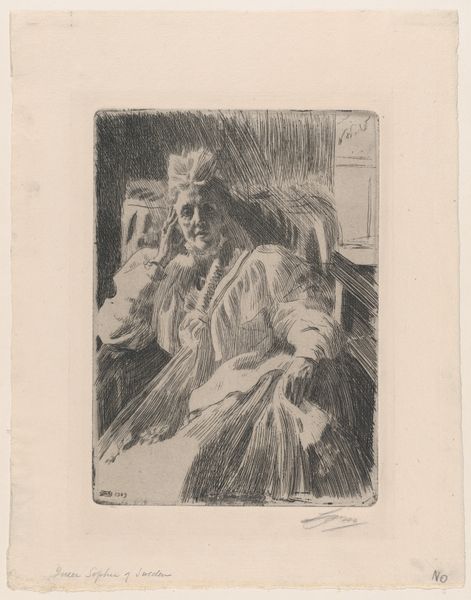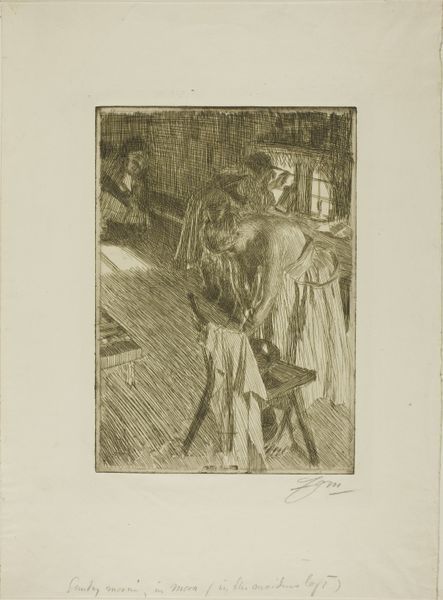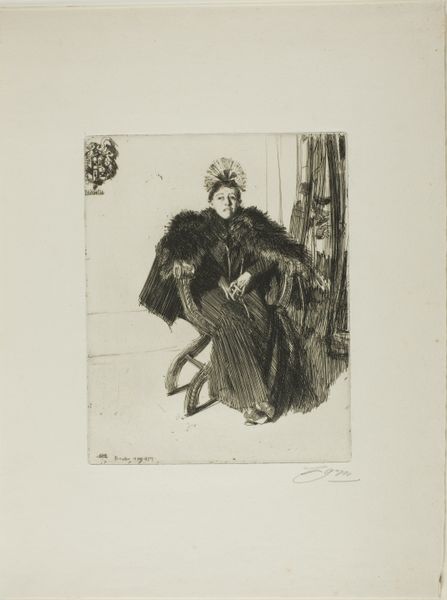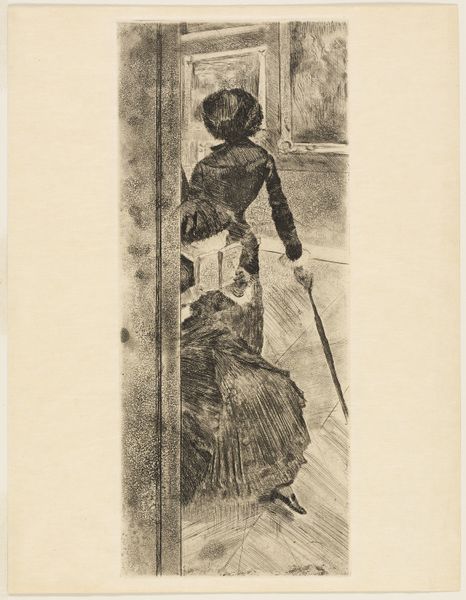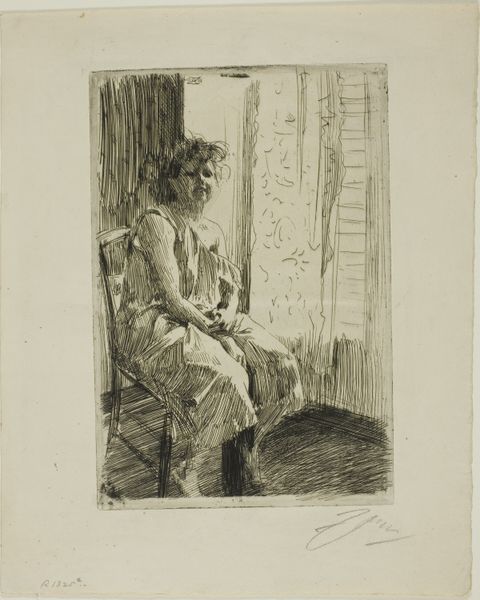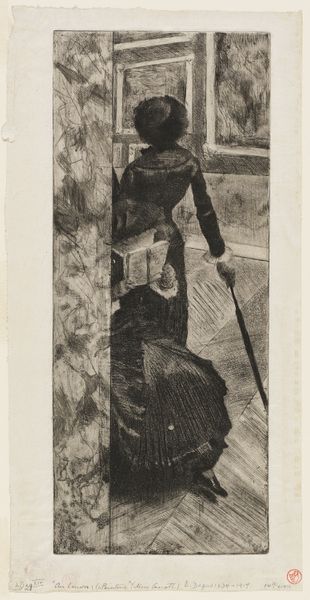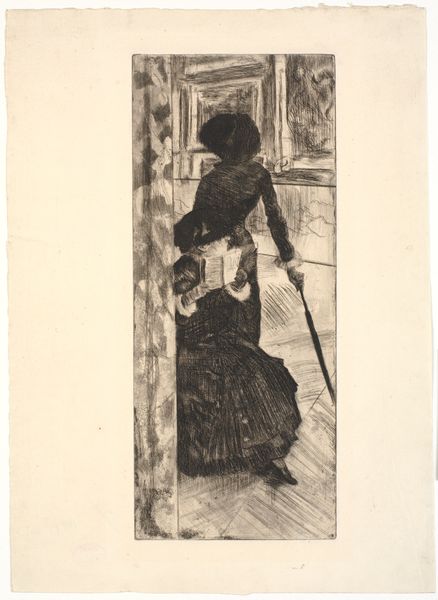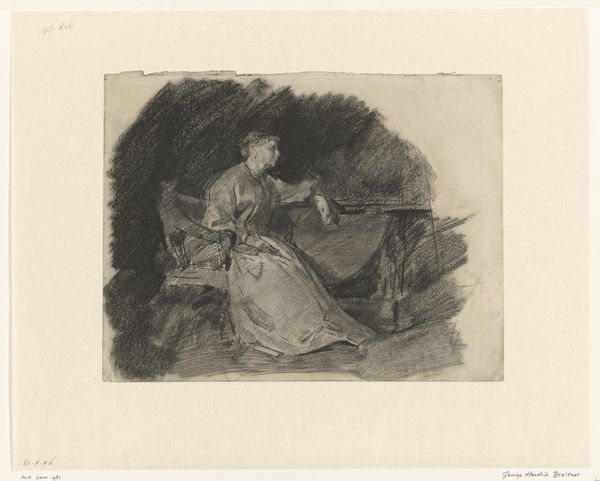
Dimensions: 198 × 136 mm (image); 204 × 142 mm (plate); 339 × 219 mm (sheet)
Copyright: Public Domain
Curator: Anders Zorn's etching from 1903, titled "The Storehouse", depicts a figure on some steps leading up to what seems to be, well, a storehouse. What are your initial thoughts on this print? Editor: My first impression is of a stark, almost somber, intimacy. The limited tonal range focuses my attention on the figure’s averted gaze. It creates a certain vulnerability, a questioning of power dynamics that is very present. Curator: Zorn was, of course, celebrated for his technique, particularly his command of etching. Note how he employs a relatively simple medium and the effects he achieves nonetheless. The plate has been worked very thoroughly, creating the dark velvety areas alongside areas that catch the light. He wasn't merely reproducing an image; he was building an object through the labor of production. Editor: Precisely, and it is impossible to disassociate that labor from the image. Considering the social context of early 20th-century Sweden, I am intrigued by the subject's gaze, and the title suggesting perhaps the ‘Storehouse’ is her domain or realm. Curator: Her attire seems equally significant; a distinctive collar paired with a large belt that is more ornament than functional piece of attire. This brings a tension with the work the woman is presumably engaged in as her posture certainly suggest it. How do you understand this complexity? Editor: To me, this juxtaposition hints at the complexities of women's roles and expectations within a rapidly industrializing society, reflecting evolving identities but also persistent class constraints. Are we witnessing a fleeting moment of resistance? Perhaps, a subtle questioning of her place in society as she performs labor but remains an object. Curator: I’d agree. The artist deliberately calls attention to the woman. He is asking the viewer to observe her and in turn, his choice in representation of this female persona, gives us access to consider her lived experiences. Editor: Thank you, by focusing on these elements we have unlocked the door to see a glimpse of lived experience and ask, in the modern era, what has and has not changed for women within systems of work, commerce, and expectation? Curator: It's been revealing to really pull apart the materials and craft behind this beautiful etching to ask, “How did he do that?”. It always enriches an art experience.
Comments
No comments
Be the first to comment and join the conversation on the ultimate creative platform.
